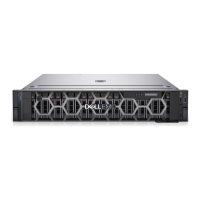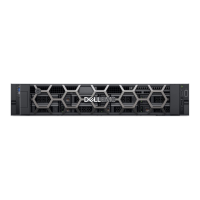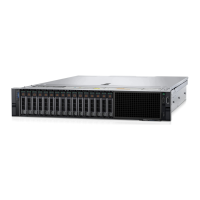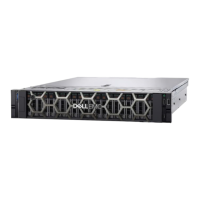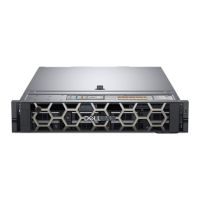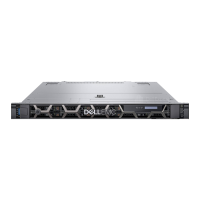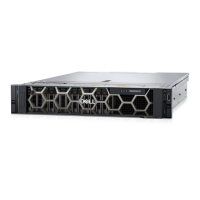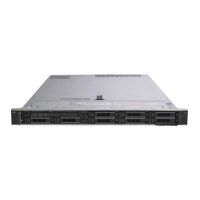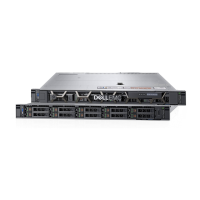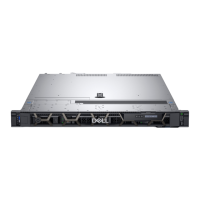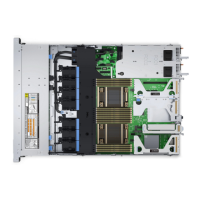3. Route the liquid cooling tubes through the rear exit point next to the I/O function panel. Ensure the routing follows the
numbered labels on the tube and liquid cooling ring holder (1, 2).
4. Connect the liquid cooling detection cable to the RIO card connector.
5. Insert the rubber rings on the tubes on to the rubber holder.
6. Using a Phillips #1 screwdriver, tighten the captive screw on the liquid cooling ring holder to secure it in place.
NOTE: The numbers on the image do not depict the exact steps. The numbers are for representation of sequence.
Figure 85. Installing the liquid cooling heat sink
Next steps
1. If removed, install the air shroud.
2. Follow the procedure listed in the After working inside your system.
Expansion cards and expansion card risers
NOTE:
A system event entry is logged in the iDRAC Lifecycle Controller if an expansion card riser is not supported or
missing. It does not prevent your system from turning on. However, if a F1/F2 pause occurs with an error message,
see Troubleshooting expansion cards section in the Dell EMC PowerEdge Servers Troubleshooting Guide at www.dell.com/
poweredgemanuals.
88 Installing and removing system components
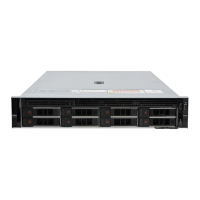
